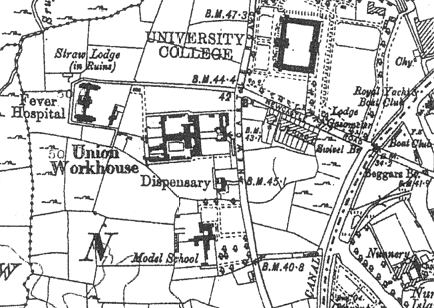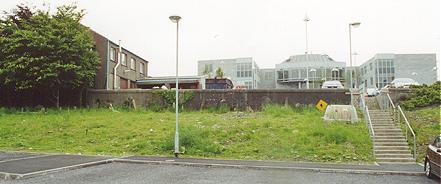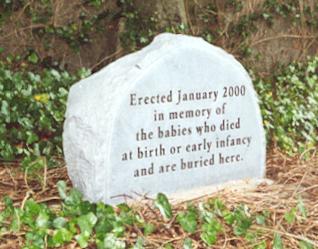Galway, Co. Galway
Galway Poor Law Union was formally declared on the 1st June 1839 and covered an area of 262 square miles. Its operation was overseen by an elected Board of Guardians, 37 in number, representing its 12 electoral divisions as listed below (figures in brackets indicate numbers of Guardians if more than one):
Co. Galway: Annahdown, Arran (2), Athenry, Ballynacoortia (2), Clare Galway (2), Galway City (15), Killanin (3), Lackagh (2), Moycollen (3), Oranmore (2), Oughterard (3), Stradbally.
The Board also included 10 ex-officio Guardians, making a total of 47. The Board met each week at noon on Wednesday.
The population falling within the union at the 1831 census had been 97,581 ranging from Stradbally (population 1063) to Galway itself (33,120).
The new workhouse, built in 1839-41, was built on an 8-acre site at the west side of the Newcastle Road in Galway. Designed by the Poor Law Commissioners' architect George Wilkinson, the building was based on one of his standard plans to accommodate 1,000 inmates. Its construction cost £8,162 plus £1,637 for fixtures and fittings etc. It was declared fit for the admission of paupers on 27th Dec 1841 and admitted its first inmates on 2nd March 1842. The site location and layout are shown on the 1921 OS map below.

Galway workhouse site, 1921.
An entrance and administrative block at the east of the site contained a porter's room and waiting room at the centre with the Guardians' board room on the first floor above. On the 1921 map, it had been extended at the north end, possibly to add an additional children's wing.
The main accommodation block had the Master's quarters at the centre, with male and female wings to each side. At the rear, a range of single-storey utility rooms such as bakehouse and washhouse connected through to the infirmary and idiots' wards via a central spine containing the chapel and dining-hall.
Galway, like many other unions, fell under enormous strain during the famine years in the mid-1840s. Sheds were erected in the workhouse yards to accommodate an additional 100 inmates. However, the financial pressures eventually proved too great and the workhouse was eventually closed for a period. A fever hospital was subsequently erected at the west of the workhouse
After the formation of the Irish Free State in 1921, the destitute in the Galway workhouse were transferred to the County Home in Loughrea. A hospital was established at the workhouse site, known as the Central Hospital. In 1956, a new Regional Hospital was built on an adjacent site and the old Central Hospital was demolished in 1957.
Galway also had a general hospital on Prospect Hill at the north side of the town. This too has now been demolished and the site is occupied by county council administrative buildings. However, a small infants' graveyard survives on the site.

Galway hospital site, 2000.
© Peter Higginbotham.

Galway hospital infants' graveyard, 2000.
© Peter Higginbotham.
Records
Note: many repositories impose a closure period of up to 100 years for records identifying individuals. Before travelling a long distance, always check that the records you want to consult will be available.
- Galway local archives, Island House, Cathedral Square, Galway. Holdings include Board of Guardians' minutes (1839-1921).
Bibliography
- Higginbotham, Peter The Workhouse Encyclopedia (2014, The History Press)
Links
- None.
Unless otherwise indicated, this page () is copyright Peter Higginbotham. Contents may not be reproduced without permission.


